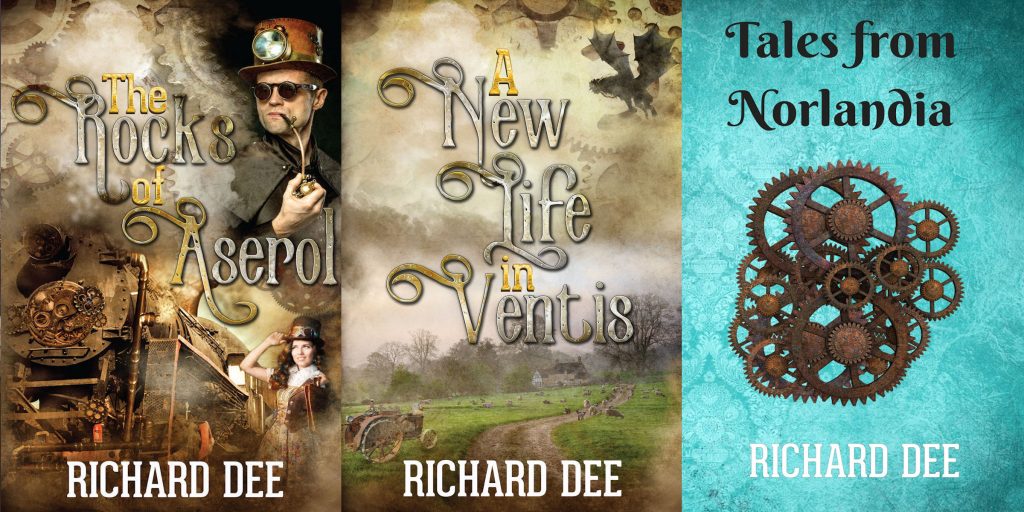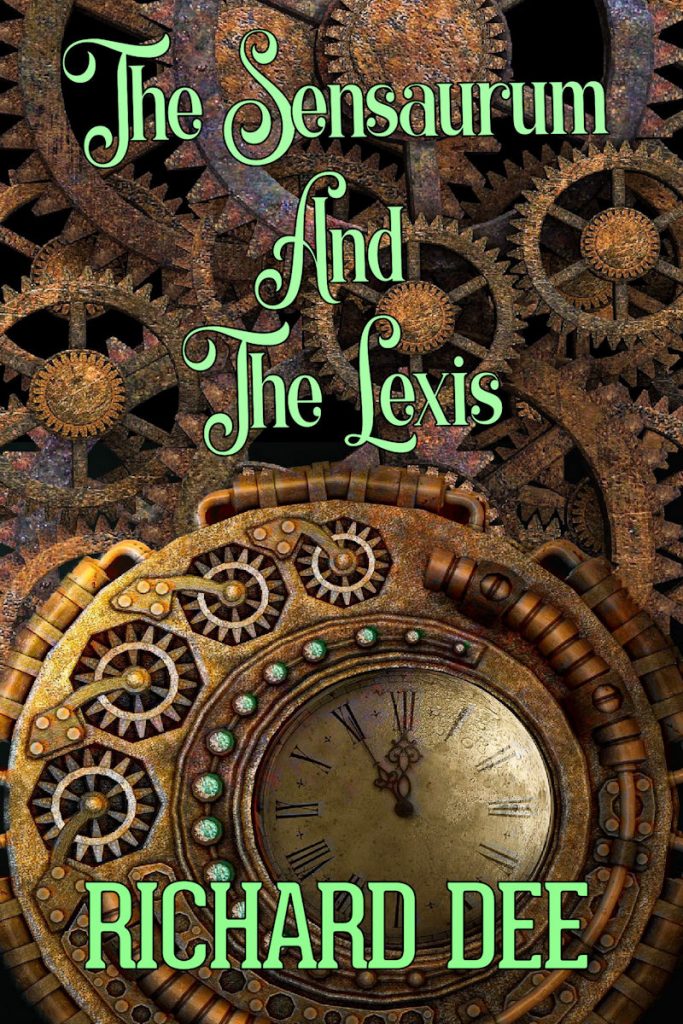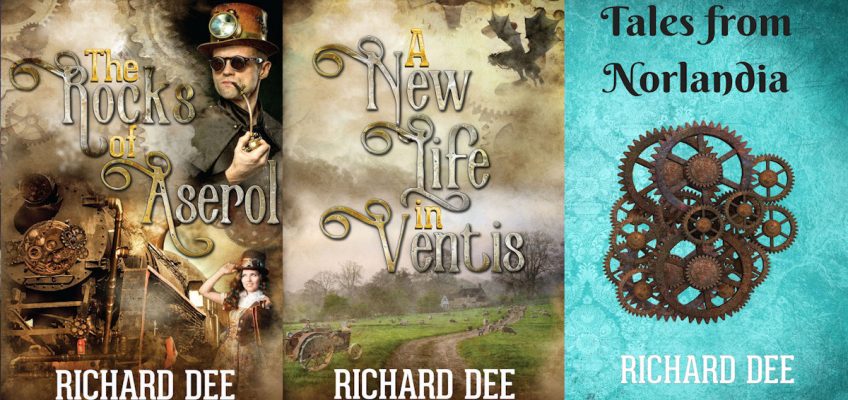Following on from my last post,
I mentioned that I really enjoyed creating my Steampunk world of Norlandia. When you look at Victorian times, there was an explosion of new technology, it was just as exciting a time to live in as ours is. The possibilities must have seemed limitless, with the foundation of modern society laid in a few short years, including much of what we still use today.
Using this time as a base, there is so much potential to build a modern world with alternative technology, using a different starting point and seeing where you can develop a credible but different way of doing things.
But,
I have noticed that there is a tendency to trivialise the technology, by taking just about anything modern, putting some random gears (with no discernible purpose) on it and calling it Steampunk.
Cue the music
As regular readers will know, I’ve been writing Steampunk, since 2013. I wanted to create a complete, realistic and fully functioning Steampunk world, not just hang a story on a place with a few cogs randomly distributed around the place.
If you want to know more about how I started writing in this genre, you can click the link below to follow
(Opens in new window)
As a world-building exercise, the Steampunk setting produces some real challenges. Not least the basic question. Where do you start? What out of all the technology we have now do you deny your alternative universe? When it comes to the crunch, do you actually need to deny them anything?
If you accept that Steam is your primary source of power, then you must look to around 1850. Oil has yet to be discovered and consumed in large quantities, indeed it’s still seen as a quack medicine by those in America. Whale oil is used for lighting, as well as coal gas. There’s no electricity either.
These two things will explode into prominence in a few years. Society is ripe for new inventions.
So, starting from this point, I tried to see where a different approach would take us. Once you do that, you can see that a technological society need not be dependent on the things we take for granted. Just about anything that we do today can be done in a different way.
Let’s look at two examples.
The jet engine.
Now here’s a big one, right at the start. How does a jet engine work? Roughly speaking, a fan is turned by the expanding air resulting from the burning of hydrocarbon vapour. This fan sucks in more air, compressing it and pushing it out, causing motion.
The critical bit is the combustion that starts the whole thing off. We use kerosene vapour as fuel. Mainly because it’s cheap, easy to obtain and store. If we had no kerosene, we could use any flammable vapour. The Victorians had gas, derived from heating coal in the absence of air. Why not use that to fuel your engine? All you need is a tank to hold it. You already have one of those, for the kerosene. If you make it capable of withstanding the pressure of the stored gas, the result will be the same.
Secondly, power in the home and workplace.
The great advantage of electricity is that it can be easily delivered over distance. Steam can be supplied in towns (as it is in New York even now) but in the countryside, a new means of power supply is required. I thought about it and decided to go for clockwork engines, driven by rechargeable springs.
Now I can hear you say that it’s not very efficient and quite fragile. I agree. But, while our clockwork systems might be, imagine how they would have developed if it was all we had. The mechanism would be refined and perfected, with regenerative charging, better springs and gearing, greater capacity. The springs themselves could be interchangeable, rewound anywhere there was running water to drive a winder, be rented and come in various sizes, there really is no limit to the possibilities.
You can find anything we do today and work out another way to do it, using the limits of your world. And, knowing what has been invented by us since 1850, you can re-invent it in your Steampunk world, in a different way. So electrical switches become mechanical, clockwork or high-pressure steam drives domestic appliances and gas replaces petrol and diesel oil.
If you do it like that, there is no need to stick random gears on any of it.
And now we move on to the most exciting part of Steampunk World-building.
That which never was.
If you think of how our modern world has evolved, there are things that have not been invented, for whatever reason. It could be because we don’t know how to do them yet, or that we don’t realise that we actually need them in our lives. But consider, if our technology had not been constrained by perfecting what we have, using what we know, what other useful inventions might we have stumbled upon?
The clockwork example above is a perfect illustration, something that we don’t consider useful because we don’t need to. Every major discovery these days is based on electricity, from mobile phones to the Large Hadron Collider. What if all the inventors in the world had no electricity to play with, what else could have been discovered?
My steampunk world has advanced further than ours in some ways, such as in medicine, and gone in a different direction in others, with miraculous innovations in fields that we pay little attention to today.
I hope I have given you some insight into my creative process, these are just examples, to find out what else I have devised to make my Steampunk world function, you’ll just have to get your hands on the books.
Tales from Norlandia is a series of short stories, giving you an insight into the workings of the world, while The Rocks of Aserol and A New Life in Ventis are the adventures of Horis Strongman, an employee of the Ministry of Coal. He is an innocent abroad, in a world on the cusp of change, fighting to keep those he holds dear safe.

The soon to be released The Sensaurum and The Lexis goes further into Norlandia’s future.

I’d love to get your comments, please leave them below. While you’re here, why not take a look around? There are some freebies and lots more content, about me, my writing and everything else that I do. You can join my newsletter for a free novella and more news by clicking this link.
![]()


